Celebrities Line Up for Global Climate Change March
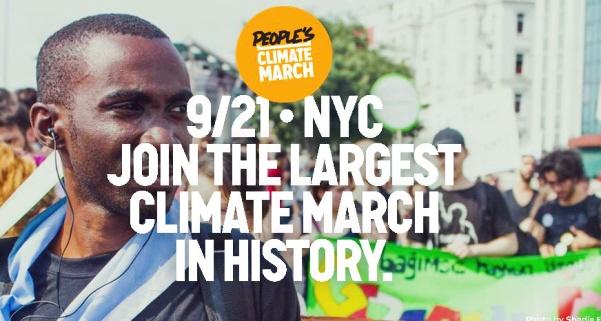

Some of the world's top politicians will meet in New York City this week to discuss global temperatures. If they want any proof that climate change is impacting the globe, they only have to look at the map.
The People's Climate March, which was organized for Sunday, Sept. 21, to coincide with a U.N. climate meeting in New York City this week, is now set to take place in more than a hundred locations across the globe. Host cities range from San Francisco to Alausa Lagos, Nigeria. Even smaller events, designed to reinforce the global nature of concern, have sprung up in cities on every continent.
But, as is often the case, the largest attractor to this cause may be the names that are lending their weight to the march. More than 50 celebrities, from Prince Albert II of Monaco to actors like Willem Dafoe, Susan Sarandon and Brad Pitt, are stepping up to support the effort -- which has garnered the endorsements of more than 1,000 environmental, labor and civil rights organizations.
Organizations like Greenpeace, Natural Resources Defense Council, Sierra Club and Avaaz.org are organizing bussing and scheduling marches. For those who can make it to New York, more than 1,400 businesses are getting involved, as the Big Apple gears up for likely the largest environmental statement to take place across the globe.
Organizers have also put a fair amount of attention into tailoring the march to meet the talents and interests of all attendees, perhaps in an effort to correct one of the key problems that activist marches experience when trying to recruit supporters: disillusionment.
“A lot of people tune out because they feel hopeless,” Canadian author Naomi Kline observed in a recent interview. To counteract that, the organizers have included interactive searches on the People's Climate March website to inspire artists, musicians, activists and others to find their niche and get involved.
It will be interesting to see what impact the march has on world leaders and the gridlock that has manipulated climate talks in the past. One thing is for sure: Most U.N. leaders won’t leave the climate change dialogue in New York when they head home. And that may be the greatest positive outcome of Sunday’s Climate March --which aims to “bend the course of history” -- when it comes to climate change denial and the perception that global warming is an elusive phenomena that can be ignored.
Image credit: People's Climate March
Does the G8 Report Miss the Real Heart of Impact Investing?


By Marta Maretich
We were all waiting for it. Now, at last, it’s here.
The Social Impact Investment Taskforce report hit the media on Sept. 15, provoking a small flood of news stories and reaction pieces from governments, development agencies and third-sector bodies.
At 51 pages (not including the eight individual country reports), The Invisible Heart of Markets is a hefty document in more ways than one. It was authored by group of heavyweights including government ministers and the heads of impact organizations from around the world, led by prominent social finance advocate Sir Ronald Cohen. Its editor, Matthew Bishop, is a respected author and writer for the Economist. Even Pope Francis apparently lends his support to the project with a bullish opening quote.
Everything about the report signals its significance not only to the social investing sector but also to the worlds of finance, philanthropy and public policy, all of which will be touched by its far-reaching recommendations. It gathers together what has been until now a scattered picture of the many strands and branches and offshoots of impact, and brings a practical focus on where we all need to go from here. Accordingly, commentators from various parts of the sector are beginning to weigh in on the report’s ramifications in areas like development, the role of government, the future of philanthropy and even crowdfunding.
All this makes the taskforce report a success. Its ambition, its scope, its polish — not to mention the evident political clout that lies behind it — are further signs that impact has arrived. It is a milestone in the evolution of our sector and its effect will be significant and lasting. Sector watchers (myself included) will be mining its rich content for months to come, as well as tracking the progress toward the goals it dares to lay out.
Where change really comes from
And yet, in the dazzle of the report’s many authoritative recommendations for governments, policymakers an impact sector leaders, there’s a danger of overlooking a vital detail: real change doesn’t come from institutions or governments, nor does it come in the form of policies, manifestos or even laws. These things are necessary for the growth of our sector now, as the report neatly demonstrates, but they are just expressions of a more profound shift that will be needed if impact is to fulfill its potential.
Because real change comes from people, from the things they believe — their values — and from the decisions they make as a result of those beliefs. In organizations, whether businesses, foundations or ministries, significant change happens when those who are accountable for making strategic decisions, such as top managers, management teams and trustee boards, change the way they think. In public life, change arises when many individuals alter their thinking along with their voting patterns.
It is to these incremental, individual shifts of belief that we owe the progress of the social investing movement so far. Its early advocates, including Cohen, have been persuasive, even charismatic, and the taskforce report is a measure of how far they’ve brought things in just a few years. Its agenda is ambitious and, if we realize its vision, there’s no doubt that impact investing will move into the mainstream and become more widely practiced.
But will it really mean anything? Will anything really have changed as a result? That depends.
Change is what impact investing is all about. It is market finance with a transformative social purpose. The top-down measures proposed by the taskforce report are needed, but without a corresponding change in the attitude of the decision-makers inside many organizations, they aren’t enough to turn impact into the force for global change we hoped it could be. And without more public engagement by small “retail” investors, impact investing is destined to remain the hobby of a small financial elite, rather than become, as it might, a true evolution of market finance.
The heart of the matter
The report acknowledges this in some measure and its recommendations, such as clarifying the fiduciary responsibilities of trustees, could really help. But the questions remain: How do we change minds when it comes to impact investing? How do we convince a skeptical financial sector (and it still is skeptical, despite positive noises) that impact is more than just the flavor of the month? How do we empower business leaders and governing bodies to embed their values permanently in their strategy and give them the support they need to follow through?
These questions can’t be fully answered through better policy, more data or even good regulation, although those things can help create a climate where answers can be found. To get to the heart of the impact market we have to find ways to touch its human sources, to change the minds of people and the dynamics of decision making groups.
This won’t be simple. We’ve only started down the road toward a new financial future and there’s still a long way to go. But it's beneficial to remember that the hardest part of the journey will not be creating new market systems and infrastructure (though that won’t be easy). Rather, it will be changing the way we all think about finance and how it can be used to create beneficial outcomes for people and the planet.
If we can manage to change our mindset, realizing the rest of the taskforce's vision will seem like a piece of cake.
Image credit: Flickr/audiinsperation
Marta Maretich writes about impact, sustainable and social investing for Maximpact.com, a deal listing portal and information hub for the new finance sector. She is Chief Editor of the Maximpact blog.
Dunkin’ Brands, Krispy Kreme Commit to Sustainable Palm Oil


Dunkin’ Brands Group, the parent company of Dunkin’ Donuts and Baskin-Robbins, announced its commitment to source only 100 percent sustainable palm oil for its U.S. locations by 2016. Less than a day after Dunkin’s announcement, Krispy Kreme also committed to source 100 percent responsibly produced palm oil.
Dunkin’ Brands will work with its suppliers and its franchisee-owned purchasing cooperatives to source palm oil that's 100 percent fully traceable to the mill by the end of 2015, and to the plantation by the end of 2016 for its Dunkin’ Donuts U.S. restaurants. By March 1, 2015, Dunkin’ Brands will develop and publish a phased implementation plan.
Dunkin’ Brands will require suppliers to adhere to certain standards, including:
- No development of high-carbon stock forest and high-conservation areas
- No burning in preparation of land or in development
- Progressive reduction of greenhouse gas emissions on existing plantations from all sources
- No development on peat areas
- No exploitation of people and communities
Forest Heroes activists pressured Dunkin’ Donuts to commit to sourcing sustainable palm oil. A campaign that called on Dunkin’ to 'be a Forest Hero' culminated in activists attending the company’s shareholders meeting in Quincy, Massachusetts in May. While Forest Heroes is happy with Dunkin’s announcement, the nonprofit expressed concern that the commitment only extends to the U.S. and not beyond. The company will not determine the international timeline until March 2015 after it has mapped its international supply chain. Forest Heroes states that it will be “urging Dunkin’ to review its international supply chain as quickly as possible and implement an equally strong commitment abroad.”
Krispy Kreme’s commitment goes further
Krispy Kreme’s commitment goes further than Dunkin’ Brands as it sets a deadline for compliance globally. Forest Heroes calls the company’s commitment a “race to the top.” Krispy Kreme states on its website that its commitment to source sustainable palm oil started in January with a commitment to source palm oil only from suppliers certified by Roundtable on Sustainable Palm Oil (RSPO) for its U.S. locations. Now, the company is committing to achieve 100 percent responsible sourcing of palm oil worldwide. By the end of 2016, all of the company’s palm oil will come from RSPO certified sources, RSPO mass-balance, mixed-source supply and GreenPalm certificates purchases. All of Krispy Kreme’s suppliers will be required to trace their palm oil to plantations that protect forests and peatlands, don’t exploit communities and workers, and comply with RSPO principles and criteria.
Palm oil industry causes environmental destruction
Palm oil is a $50 billion a year commodity and is found in half of all consumer goods. About half of the world’s palm oil comes from environmentally destructive sources that cut down rainforests and destroy peatland. Companies have cleared more than 30,000 square miles of forest to make room for palm oil plantations. Between 1990 and 2005, 55 to 60 percent of palm oil expansion in Malaysia and Indonesia, the world’s top palm oil producing countries, caused virgin tropical forests to be cut down. As a result, Sumatran tigers and orangutans are on the brink of extinction.
Image credit: Krispy Kreme
SOCAP14 Interview: Scott Anderson, Nextbillion.net


This video is part of our ongoing coverage of SOCAP14. To see the rest please visit our SOCAP 14 page here.
Scott Anderson is managing editor of Nextbillion.net, a website and blog bringing together the community of business leaders, social entrepreneurs, NGOs, policy makers and academics who want to explore the connection between development and enterprise. In this clip Scott talks about his experience at SOCAP14 and the state of social enterprise as well as some new developments at Nextbillion.
Behind the People’s Climate March: An Interview with 350.org

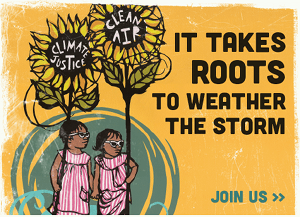
By Sanaz Arjomand
Why are an expected 100,000 people hitting the streets of New York City this Sunday? To learn more about the strategic thinking behind the upcoming People’s Climate March, the Bard Center for Environmental Policy sat down with 350.org’s U.S. Campus Field Manager, Jenny Marienau.
This Q&A is an edited excerpt from the National Climate Seminar. Bard CEP’s twice-monthly dial-in conversation features top climate scientists, policymakers and activists. The complete podcast of the interview is available here.
Bard CEP: What planted the seed for the People’s Climate March?
Jenny Marienau: About a year ago, United Nations Secretary General Ban Ki-moon called a meeting of world leaders to talk about solutions to the climate crisis. The People’s Climate March was planned as a way to take advantage of that national stage to demonstrate the power of the climate movement. We tried to bring together all of the different constituencies involved, to flex the climate movement’s muscle and let it see itself all together, marching in the street.
Bard CEP: How many people are participating?
Marienau: We’re hoping to be one of the largest marches in the climate movement’s history with upwards of 100,000 people participating. All 50 U.S. states will be represented at the march. There are 374 buses and trains listed to come to the march.
The march itself is a project of over 1,100 groups, including faith groups, climate action groups, groups of parents and public interest law centers. They have organized events all around the march as well as the march itself. Because it’s such a broad coalition, there isn’t one ask or one set of demands other than the very broad sentiment: “We want to see climate action now.”
Bard CEP: What was the process for building the coalition for the march?
Marienau: Folks with an interest in taking action on climate have come together in a series of groups. For example, a group from New York City with goals and asks for New York City came together and did some planning at their own table. There was also a youth table of folks who represent high school and college students and young organizers. Different interest groups coalesced to come up with their particular interests in the march. Then those tables of people came together to design the overall group march as part of an open call. The effort has been not to have 350.org leading the organizing of the march, just leaving space for a larger coalition to put it together.
Bard CEP: What will success at the People’s Climate March look like?
Marienau: For me, it will really be the quality of organizing that comes out of it. Yes, the march is a referendum on where the U.S. stands on climate action, but in terms of the power that we’re building, how we go to the march in coordinated groups and how we come out of it with clear next steps for our communities is the best measure of success.
Bard CEP: What past lessons learned have been applied here?
Marienau: One important lesson was learned in a fairly crushing way around [the] 2009 climate bill. Almost everyone in the nonprofit climate organizing sphere was putting all their energy into this bill that failed to pass. There was a vacuum created in that “all-in-one solution” type of organizing — because when your silver bullet fails to hit the target, what else is there? I think that’s where this patchwork style of organizing originated. We don’t have one solution to the climate crisis, and top-down solutions are not always the best option. Community-based solutions that really work for people in their hometowns are an important — maybe the most important — piece of our organizing.
Bard CEP: What should interested parties be doing between now and the march?
Marienau: Check out the People’s Climate March website. You can find events in your area or transportation shares to the march. Once you’ve figured out where you’re going and how you’re getting there, invite your friends, invite your faith community, invite everyone you know. Social media is a great way to spread the word, as are posters in coffee shops. Finally, decide who you want to meet and make a plan to do that; there are lots of events where you can network in a more focused way listed on the events board.
--
Bard CEP will be hosting an open house along the route of the People’s Climate March. If you would like to take a break from the march and get an “aerial view," please stop by our classroom at 1150 6th Avenue, 5th Floor, between 1:00 p.m. and 4:00 p.m.
The next edition of the National Climate Seminar, at noon eastern on September 24, features Dr. Robyn Smyth on “The Next Toledo: Algal Blooms and Climate Change." Click here for dial-in information.
--
Image credit: People's Climate March. Click here for more shareable graphics.
Sanaz Arjomand is a graduate student in the MS Environmental Policy Program at the Bard Center for Environmental Policy.
'New Climate Economy': Growth via Climate Change Action
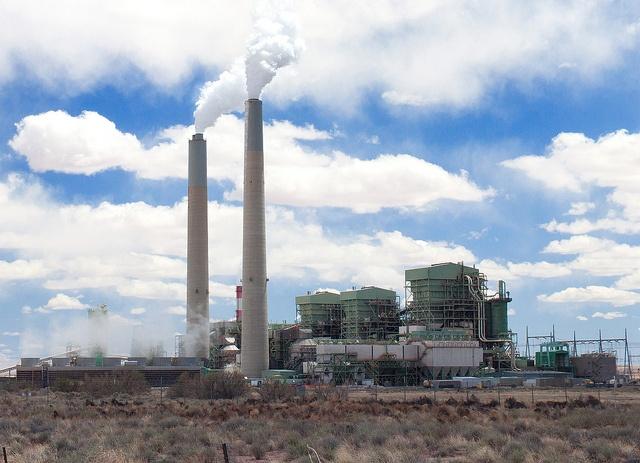

Besides denying that fossil fuel use is rapidly pushing civilization to a climate change tipping point, climate-change deniers contend that the costs associated with making climate change mitigation and adaptation a global priority would stifle economic growth and social development.
In advance of the U.N. Climate Summit and Climate Week NYC, which kicks off on Monday, some have even asserted that the campaign to reduce greenhouse gas emissions is a conspiracy aimed at gathering wealth and political power. Some might reply that this is a glaring example of “the pot calling the kettle black.”
Research studies from reputable, independent organizations, such as the landmark Stern Review, have concluded that the costs of inaction greatly outweigh the costs of addressing climate change head-on. A new study commissioned by the Global Commission on the Economy and Climate goes further, asserting that growth can not only be achieved, but enhanced, by following pathways that will result in societies that are socially and ecologically, as well as economically, sustainable.
Climate change action and the path to prosperity
The Global Commission on the Economy and Climate was established in 2013 by the governments of Colombia, Ethiopia, Indonesia, Norway, South Korea, Sweden and the U.K. “to help governments, businesses and society to make better-informed decisions on how to achieve economic prosperity and development while also addressing climate change.”
“Better Growth, Better Climate: The New Climate Economy Report” is the result of the research group's flagship project. It was carried out by the World Resources Institute (WRI) in collaboration with the Climate Policy Initiative, CRIER, Global Green Growth Institute, LSE Cities, Stockholm Environment Institute, Ethiopian Development Research Institute and Tsinghua University.
According to the report:
“The report’s conclusion is that countries at all levels of income now have the opportunity to build lasting economic growth at the same time as reducing the immense risks of climate change.”
A deep structural transformation
Getting there won't be simple, easy or quick, however, the report highlights. Doing so will require “a deep structural transformation” and technological changes that are already ruffling feathers and prompting fierce opposition from vested commercial and political interests – mainly the fossil fuel producers and power utilities whose businesses and profits are directly threatened.
Nonetheless, all the pieces are in place to drastically reduce global greenhouse gas emissions by shifting from fossil fuels to a distributed mix of locally-appropriate renewable and clean energy resources. Doing so, moreover, will result in more robust and resilient infrastructure, economies and sustainable societies. It would also open up vast new opportunities for economic and social development that, given appropriate government policies, can result in rising prosperity across all levels of society, report authors assert.
“The capital for the necessary investments is available, and the potential for innovation is vast. What is needed is strong political leadership and credible, consistent policies,” they highlight.
A critical 15-year window of opportunity
The next 15 years will be the critical window of opportunity for governments, businesses and societies to invest aggressively in climate change action that takes a holistic, integrated approach in addressing challenges spanning the water-food-energy nexus, the report's authors continue.
“It will not be 'business as usual.' The global economy will grow by more than half, a billion more people will come to live in cities, and rapid technological advance will continue to change businesses and lives,” they point out.
The New Climate Economy project team expects some $90 trillion is likely to be invested in infrastructure associated with urban, land use and energy systems worldwide over the next 15 years. “How these changes are managed will shape future patterns of growth, productivity and living standards,” they caution.
Image credits: Better Growth, Better Climate: The New Climate Economy Report
Featured image: Flickr/squeaks2569
Millennials and the Growth of Sustainable Investing


Editor’s Note: This article originally appeared in “The Millennials Perspective” issue of Green Money Journal. Click here to view more posts in this series.
By Barbara Krumsiek
During my first week at Calvert Investments as president and CEO in April 1997, I received a desk plant as a congratulatory gift from a former colleague. Seventeen years later, that plant is literally a tree, dominating a special corner of my office. It is a daily reminder of not only my personal journey at Calvert, but also the flourishing of sustainable and responsible investing over the past several decades. What began as a niche approach is more and more a mainstream investment strategy.
As an industry, we undoubtedly play a major role in promoting changes that will help shape a global green economy, add more diversity in the highest echelons of corporate governance and serve as the watchdogs of human rights in the business context.
But as we think about both where we’ve come from and where we’re going next, it’s critical to balance our attention to these major global movements with some of the day-to-day tasks within the industry that are necessary to advance these global objectives.
Reinventing socially responsible investment
In the early years of the sustainable investment industry, most companies did not recognize sustainability as a materially-relevant concept. As time passed, some companies warmed to the concept. Today, the paradigm has shifted again and many companies embrace sustainability. The Governance & Accountability Institute reported that 72 percent of the S&P 500 published sustainability reports in 2013; this is up from 52 percent in 2012 and from 20 percent in 2011.
This shift in the corporate landscape has required asset managers to evaluate and evolve approaches to how we think about the investable universe. Exclusionary investing will always be a part of our industry – particularly for those individuals who feel socially responsible investing (SRI) is the only way in which they want to participate in the capital markets – but new inclusionary and integrated approaches are also valid.
One area that continues to be a hallmark of a true sustainable asset manager is advocacy and engagement. We need to get better at demonstrating how we use our deeper ESG knowledge of companies and our interactions with corporate stakeholders to influence corporate behavior change. While we work to create more sophisticated portfolio approaches, we need more sophisticated ways to measure these impacts as well.
Shifting paradigms offer opportunities. We may even get to reinvent ourselves, as I will do next year. I will remain as Chair on the Board of Directors for Calvert Investments. I will also start my new role as Founding Chair of the Calvert Institute, which will contribute research to support the continued growth of the field of sustainable investing.
Connecting with millennial investors
Findings from Calvert’s most recent Brand Health Study (conducted Q4, 2013) support much of what the July issue of GreenMoney Journal's focus on millennial investors discussed. But one finding particularly exposed a growth opportunity. Financial advisors and their clients (i.e., investors) are not on the same page regarding sustainable investment. This disconnect is evidenced by the fact that 82 percent of advisors reported waiting for clients to raise the topic, while 72 percent of clients indicated they are waiting for their advisor to initiate it.
I believe advisors may be hesitant to bring the topic up because they hold somewhat outdated perceptions of sustainable investing. Advisors indicated that the No. 1 reason they would consider sustainable investing was “to be consistent with my client’s values (82 percent).” Yet investors split their top reason for choosing sustainable investment between: "an opportunity for strong investment performance" (50 percent) and "to diversify the portfolio" (50 percent).
These findings suggest that we, as an industry, are still viewed by financial advisors as not focused enough on financial outcomes. Yet it’s no surprise that clients have let go of that perception and look to sustainability factors as drivers of better portfolio performance. This is demonstrated most strongly right now by the two ends of the spectrum – highly sophisticated institutional investors and relatively new investors – the millennial generation.
Our Calvert brand study also confirmed that younger investors, specifically under the age of 35, are highly receptive to sustainable investing. They are more than twice as likely to invest and 60 percent more likely to have researched/inquired/considered investing in a sustainable mutual fund.
I have a close personal connection with the millennial generation. My two daughters are part of that demographic. As I think about how I can guide the new Calvert Institute to make meaningful contributions to the growth of our industry, I am so motivated by younger investors, whose awareness of environmental issues and innate perspectives on inclusion and diversity will guide their investing choices and make our field even more relevant.
Read Barbara's Complete article here.
Barbara J. Krumsiek is Chair, outgoing President and CEO of Calvert Investments, Inc. Calvert Investments is a leading investment management company using sustainability as a platform to create value for investors. Serving financial advisors and their clients, retirement plans and insurance carriers, and institutional investors, the company offers a broad array of equity, bond, and asset allocation strategies, featuring integrated environmental, social, and governance (ESG) research and corporate engagement. Strategies are available through mutual funds, sub-advisory services, and separate account management. Founded in 1976 and headquartered in Bethesda, Maryland, Calvert Investments had more than $13 billion in assets under management as of 7/31/14.
SOCAP14 Interview: Will Poole, Unitus Seed Fund


This video is part of our ongoing coverage of SOCAP14. To see the rest please visit our SOCAP 14 page here.
Will Poole is the co-founder of Unitus Seed Fund, a $20 million fund based in Bangalore and Seattle that invests in startups serving large, underserved low-income populations. In this conversation, Will discusses the state of impact investing in India, some of what has made it historically difficult and what's being done to change that. Unitus has made a great deal of progress since its inception, and Will shared three recent accomplishments with me:
- With help from high net-worth investors and family foundations, Unitus has completed its first phase of fundraising for its $20M+ fund. These new investors coming to the table show that impact investing is starting to become more of a mainstream investment choice. This trend will continue as more HNIs invest in impact, and as millennials start to put inherited wealth to better use.
- Unitus has also launched the “India Impact Acceleration Program” to help reach and support entrepreneurs from around the country. Currently, the majority of Unitus' and other private equity investment is going to companies in the south.
- Unitus has entered into an alliance with the U.S. Global Development Lab to provide substantial support for Unitus’ new India Impact Acceleration Program, which aims to help improve and accelerate the early-stage impact startup ecosystem across India.
G8 Report: Impact Investing Is the 'Invisible Heart' of Markets
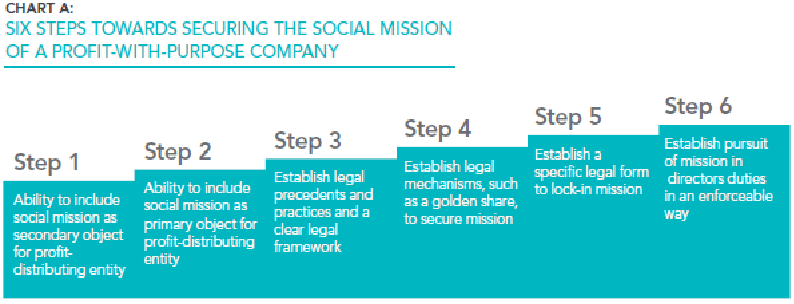

Adam Smith wrote famously of the “invisible hand” that guides markets toward ends that -- wittingly or not -- are intended to be broadly beneficial for society as a whole. Much less widely recognized, and even less widely noted, are Smith's writings regarding the essential role governments play in restraining greed and our basest instincts by establishing the ethics and rules that regulate market practices and a set a level playing field for all who aspire to enter. A recent report from the G8 Social Impact Investment Task Force takes the anatomical metaphor one step further.
“The world is on the brink of a revolution in how we solve society’s toughest problems. The force capable of driving this revolution is ‘social impact investing,’ which harnesses entrepreneurship, innovation and capital to power social improvement.” So opens the introduction to Impact investment: The invisible heart of markets, a policy paper produced by the G8's Social Impact Investment Task Force, which the U.K. established in June 2013 as part of its tenure in the G8 presidency.
Impact investing, as defined by the G8 Social Impact Investment Task Force, encompasses those who invest to achieve environmental and broad social, as well as financial, benefit – and it's growing fast, the task force found. Broadly applicable in developing and developed countries, impact investing is already producing tangible benefits across a wide variety of areas, including reducing criminal recidivism, regenerating communities, broadening financial inclusion, and helping create affordable and supported housing, they highlight.
Doing good by doing good business
The G8 Social Impact Investment Task Force defines social impact investments as “those that intentionally target specific social objectives along with a financial return and measure the achievement of both.” That extends to investments that target the achievement of specific environmentally beneficial objectives as well.
In its report, the G8 Task Force quotes, and embraces, the beliefs of Pope Francis, who has ruffled the feathers of some of the world's super-rich and government elites by criticizing the rising economic, social and political inequality that has transpired in capitalist economies over the course of the last few decades:
“It is urgent that governments throughout the world commit themselves to developing an international framework capable of promoting a market of high impact investments and thus to combating an economy which excludes and discards.”
As the G8 Task Force pointedly notes, public trust in banks, financial institutions and governments was badly shaken in the wake of the near collapse of the U.S. banking system and seize-up of global markets in 2008-2009. Widespread application of impact investing principles, methods and tools, they contend, offers a means to not only jump-start sustainable growth that benefits society and the environment, but also to re-inject a stronger sense of ethics and responsibility into boardrooms, executive suites, and throughout business and government organizations.
Impact investment growth
Investments by the world's 125 leading impact investors will grow nearly 20 percent this year, according to the latest study by the Global Impact Investing Network (GIIN) and JPMorgan Chase. The G8 Task Force points out:
“Given that $45 trillion are in mainstream investment funds that have publicly committed to incorporate environmental, social and governance factors into their investment decisions, it would only need a small fraction of this money to start moving into impact investment for it to expand rapidly along the growth path to the mainstream previously taken by venture capital and private equity.”
Impact investing embraces the triple bottom line principles that have motivated and informed 3p from its inception, so we're enthused and encouraged as the concept of impact investing has gained momentum, credibility and legitimacy.
We've been following and reporting on the rise of impact investing. The G8 Task Force's study is a landmark, and may mark an inflection point that catalyzes faster growth in impact investing. We certainly hope so, and we hope to contribute to helping make it so.
Impact investment: The invisible heart of markets, is available free for download as an Adobe Acrobat document at the G8 Social Impact Investment Task Force website.
The G8 task force has also uploaded a video, “Social Impact Investment: Turn Your Money Into Real Change” on YouTube.
*Images credit: G8 Social Impact Investment Taskforce
Labor and Environment Issues Plague Apple for Third Year

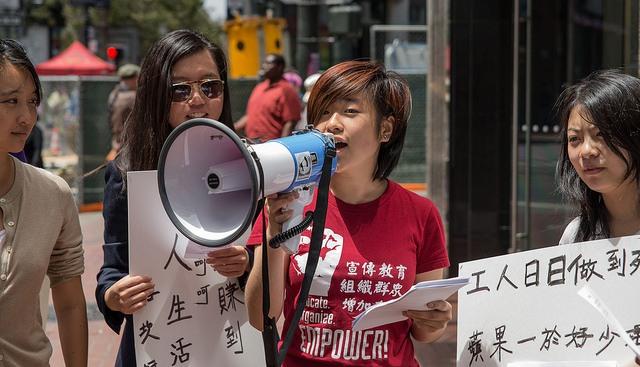
International commerce can be a real headache. It can be especially vexing when your head offices are in California, your primary manufacturers are in China, and environmental watchdogs are everywhere.
Such is the lesson that Apple is learning these days, as it tries to navigate the sticky waters of high-speed manufacturing in developing countries, where prices may be cheap, but laws and employment customs aren’t necessarily in sync with the expectations of its North American customer base.
The problem that seems to have Apple’s management stymied however is that it’s an issue that, well, just doesn’t seem to go away.
Last year Apple found that a contractor it used to manufacture components for the iPhone was under the scrutiny of labor rights organization China Labor Watch. The group tallied 86 labor violations at Pegatron facilities, including environmental pollution, unsatisfactory working conditions and the use of underage workers.
They also found evidence of environmental violations that forced China to investigate the matter. Apple eventually diversified some of the work to Catcher (Foxconn).
But Foxconn is less than a shining paragon of human rights, say activists, who point out that one of the company’s factories was the site of a massive workers’ protest in 2012.
This year, CLW and Green America released a report that suggests that while labor conditions are a bit better at the Catcher plant than last year (only 22 problems), an undercover investigator still found evidence of labor and environmental violations. The organizations backed up the research with personal interviews of some 100 plant workers.
The endemic PR problem is a big concern for Apple – or should be. In 2011 a blast at a Foxconn plant that manufactured Apple products killed two workers and injured 10. The same year, a consortium of advocacy groups rated Apple as among the worst for dealing with workers’ conditions and labor rights.
And yet, Apple seems to have a pretty good sense of the debacle industrial pollution and ongoing labor rights violations cause when it comes to its reputation. Each time that the flag has been raised, critics note, Apple has taken the initiative to investigate and hastily fix the noted problems.
And as we said earlier, it isn’t easy to keep the finger on the pulse of international contractors or companies that appear to have your best corporate interests at heart. Plenty of American enterprises have been caught unaware by the policies or follies of their overseas contractors who underestimate the importance of labor, environmental or animal rights.
Still, three to four years running, the American tech company still appears to be trying to improve its corporate social responsibility (CSR) record in China. And at a time when things like environmental pollution, suicides and poor labor conditions are more likely to garner immediate media attention than cheap phones, nothing could be more pressing to a global enterprise like Apple.
Image credit: Annette Bernhardt